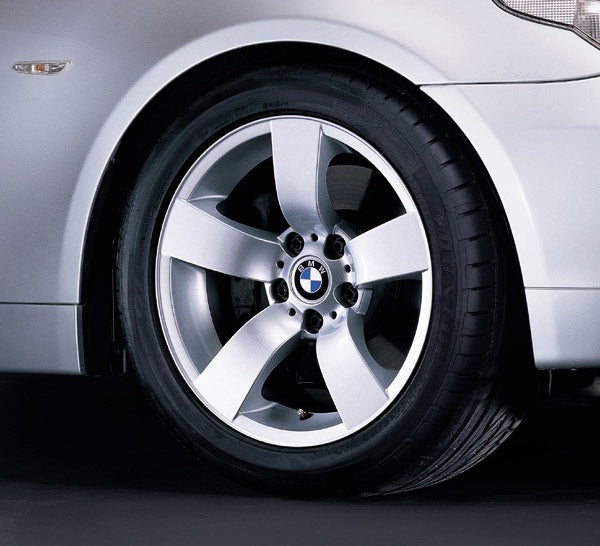
Why Do Most Rims Have 5 Spokes?
If you look around most parking lots, you will notice that most modern rims will have five spokes. If not five spokes, they will often have five sets of paired spokes. After some research and digging around, I have discovered there are a few reasons as to having this design configuration.

The biggest reason is customers like 5 spoke wheels for aesthetic purposes. People tend to like and purchase five-spoke wheels and rims. In the '80s and '90s, a few car manufacturers released tri-spoke, and four spoke wheels; however, they weren't exactly best sellers. Perhaps the best looking car equipped with tri-spoke wheels was the original 1992 Dodge Viper (SR I); however, when the Viper was refreshed for 1995, it did away with the tri-spoke wheels in favor of five spoke wheels.

Manufacturing-wise, five spokes allows the casting process to be much simpler and cost-effective when compared to a higher number of spokes. Cast wheels with a greater number of spokes do exist, but these are generally machined from a solid block of aluminum billet in several parts. As the production cost rises, so does the price the consumer pays for them. Having 6 and eight spokes is not uncommon, though.

Cast wheels generally have five spokes due to their engineering design. A 5 spoke wheel is strong enough to support the weight of the car and yet not disturb the harmonics of the wheel. In 5 spoke wheels, any one spoke has two directly opposing spokes that will reduce the effect of torsional vibration. With 6 or 8 spokes, there is a directly opposing spoke that creates a henge point. This henge point leads torsional vibration around the two opposing spokes. In addition, having an even number of directly opposing spokes causes problems with the residual stress distribution of the wheel as it cools and shrinks. This is highly evident in cast iron handwheels having "S" shaped spokes. With an even number of spokes, you have a directly opposing spoke that creates a henge point, so you can get torsional vibration around the two opposing spokes.

Leave a comment